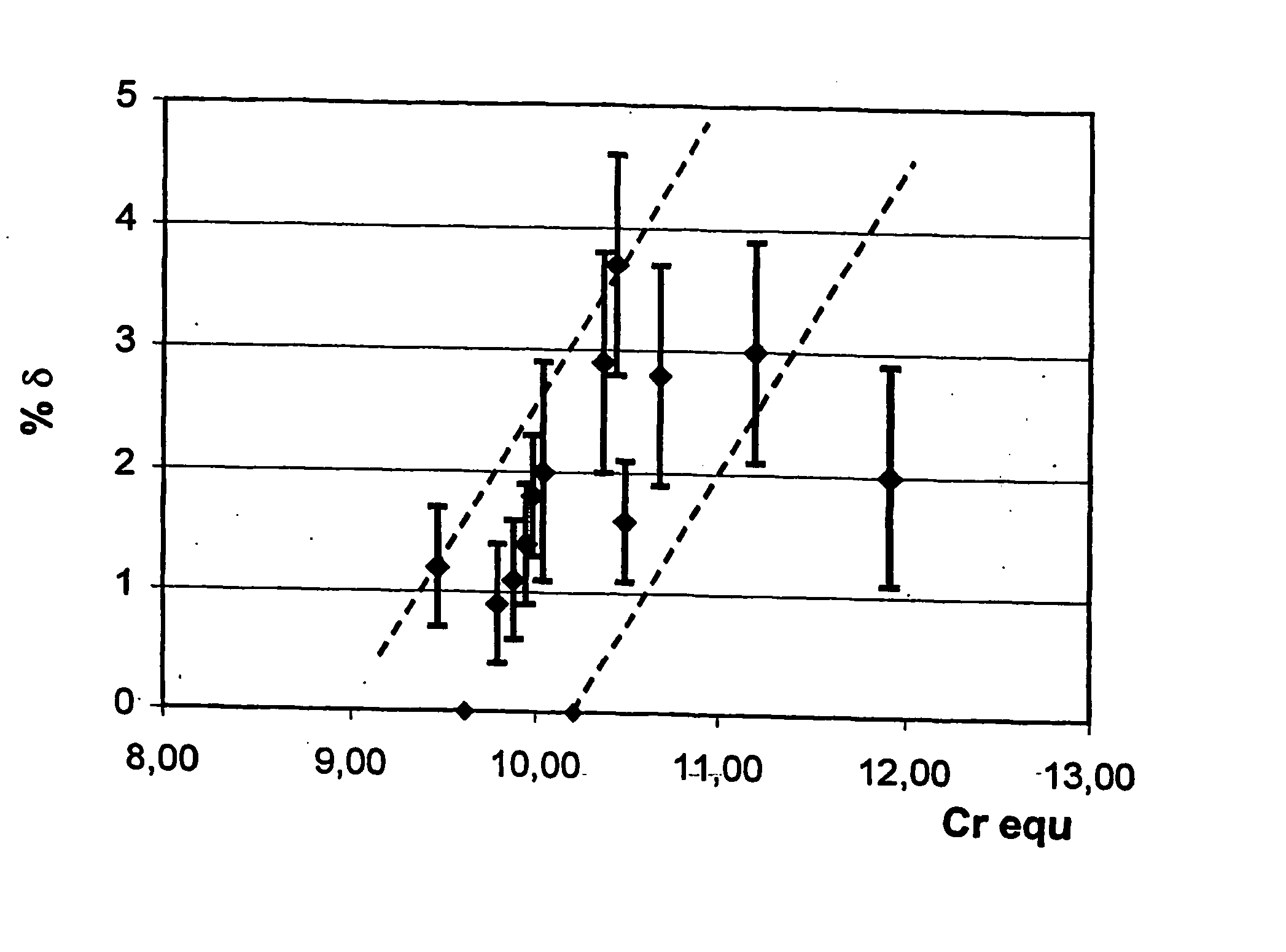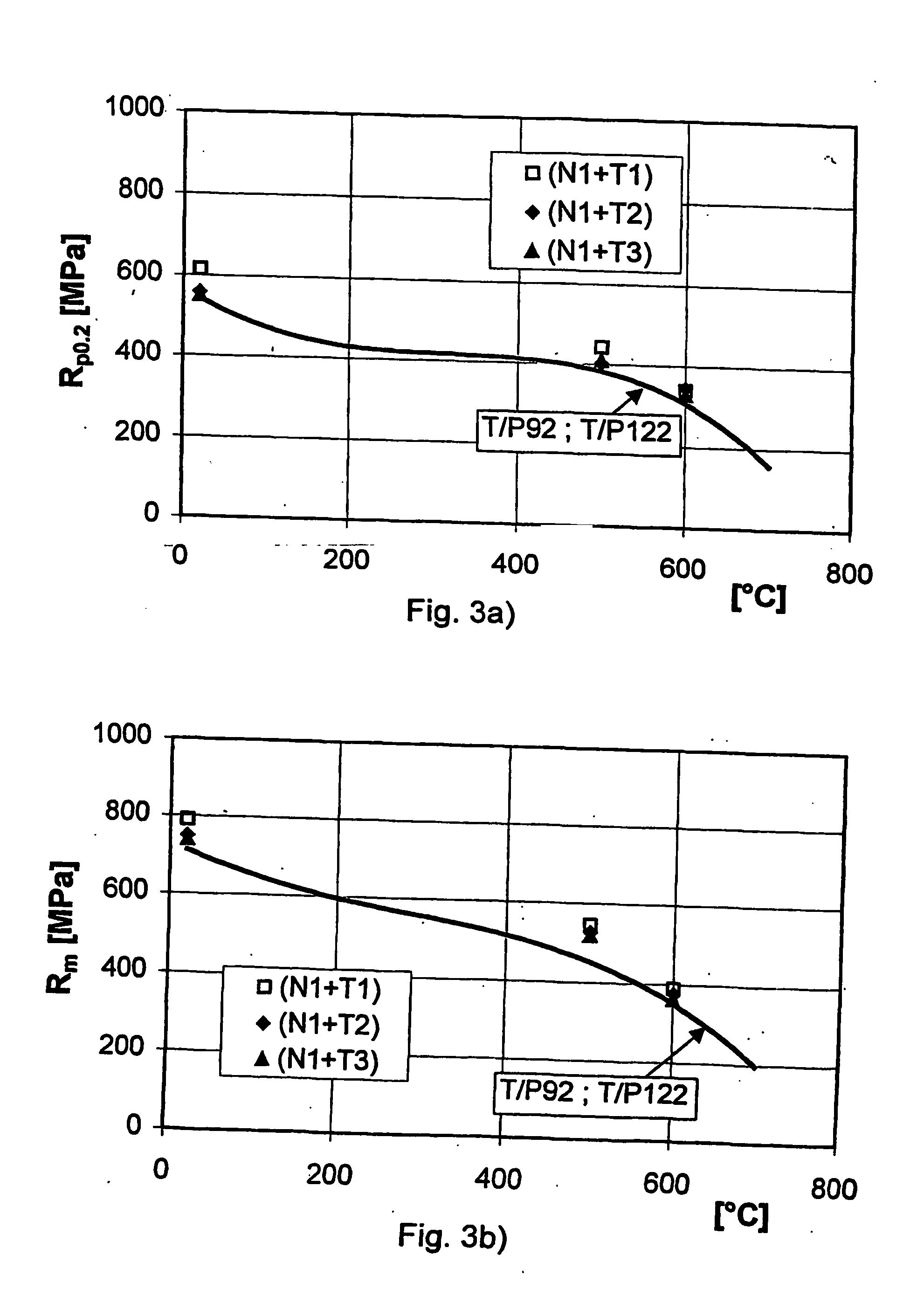Steel and steel tube for high- temperature use
- Summary
- Abstract
- Description
- Claims
- Application Information
AI Technical Summary
Problems solved by technology
Method used
Image
Examples
Example
Tests on Experimental Heat
[0121] A 100 kg laboratory heat formed from the steel of the invention was produced under vacuum (F).
[0122] FIG. 1 shows the relationship between an equivalent chromium parameter (Cr.sub.equ) derived from the chemical composition and the .delta. ferrite content:
Cr.sub.equ=Cr+6Si+4Mo+1.5W+11V+5Nb+8Ti-40C-30N-2Mn-4Ni-2Co-Cu
[0123] The parameter Cr.sub.equ derives from studies by Patriarca et al (Nuclear Technology, 28 (1976), p 516).
[0124] In FIG. 1, we show the .delta. ferrite content measured by image analysis in the optical microscope for a certain number of heats of T91, P91, T92 and X20 as a function of the parameter Cr.sub.equ.
[0125] FIG. 1 provides analytical evidence that the amounts of elements in heat F lie within the ranges given in the chemical composition defined in claim 1. We aimed to obtain a Cr.sub.equ content of 10.5% or less and if possible 10.0% or less to seek to remain substantially free of .delta. ferrite (less than 2% and preferably les...
PUM
| Property | Measurement | Unit |
|---|---|---|
| Temperature | aaaaa | aaaaa |
| Temperature | aaaaa | aaaaa |
| Fraction | aaaaa | aaaaa |
Abstract
Description
Claims
Application Information
 Login to View More
Login to View More - R&D
- Intellectual Property
- Life Sciences
- Materials
- Tech Scout
- Unparalleled Data Quality
- Higher Quality Content
- 60% Fewer Hallucinations
Browse by: Latest US Patents, China's latest patents, Technical Efficacy Thesaurus, Application Domain, Technology Topic, Popular Technical Reports.
© 2025 PatSnap. All rights reserved.Legal|Privacy policy|Modern Slavery Act Transparency Statement|Sitemap|About US| Contact US: help@patsnap.com



